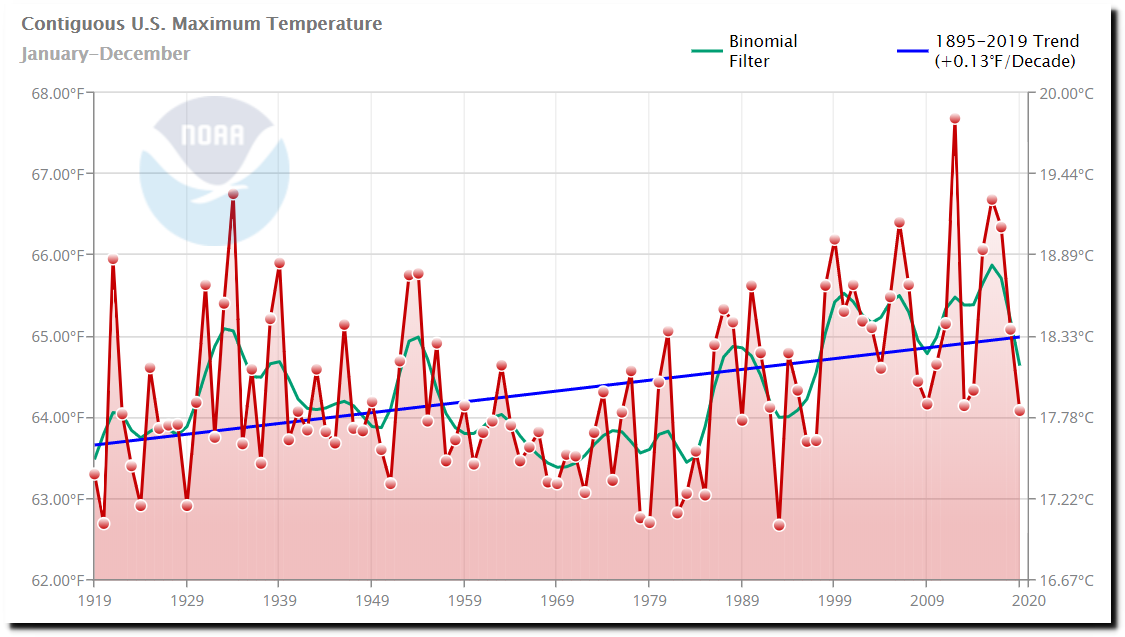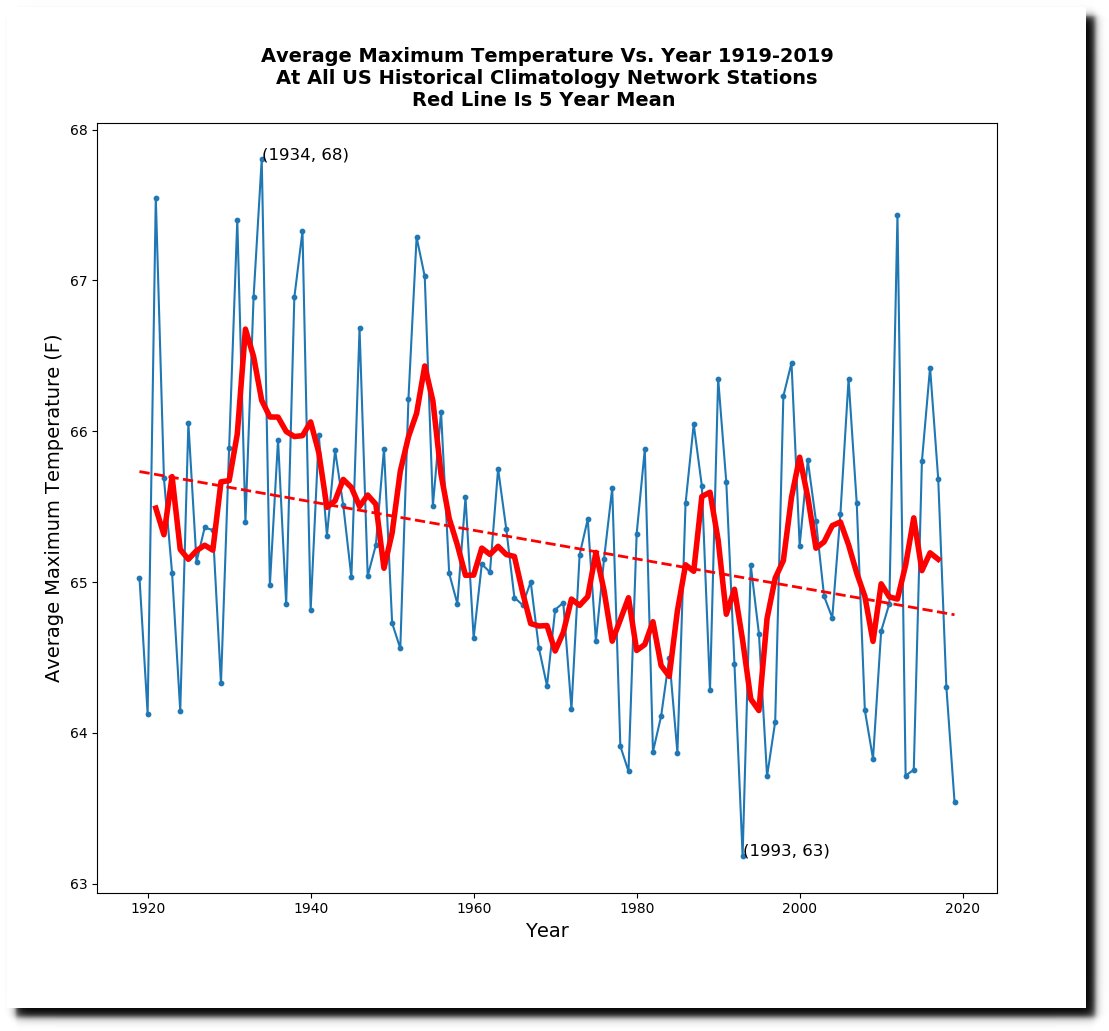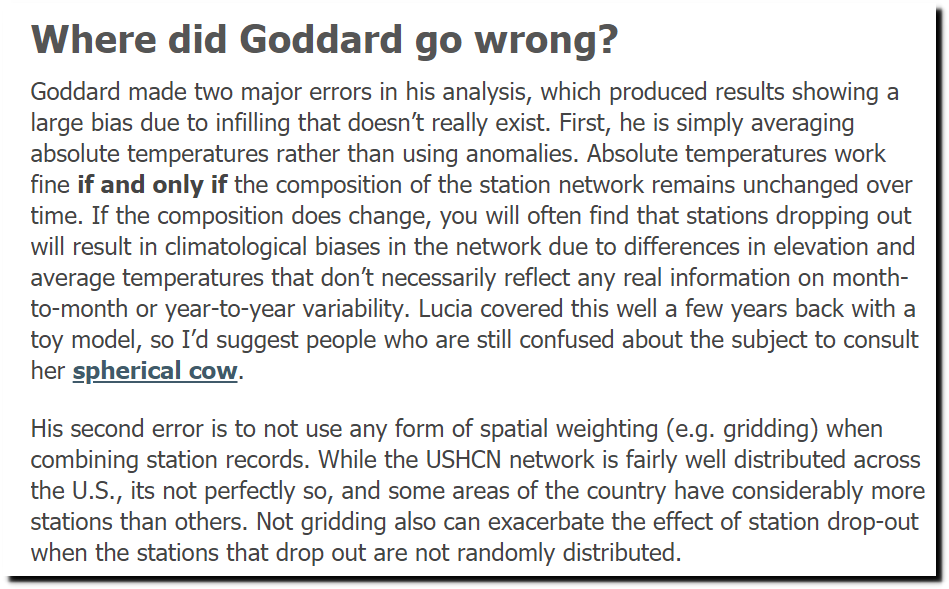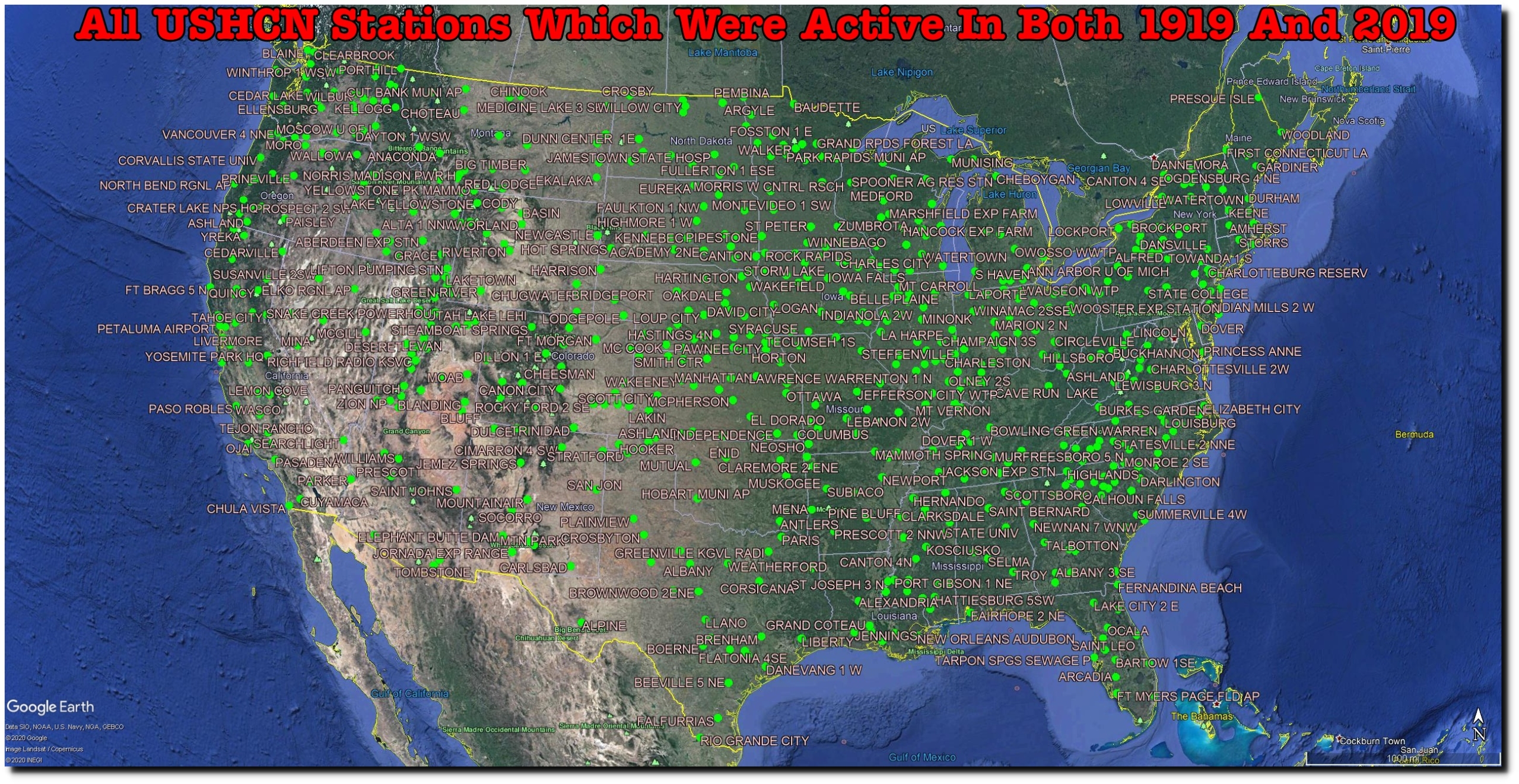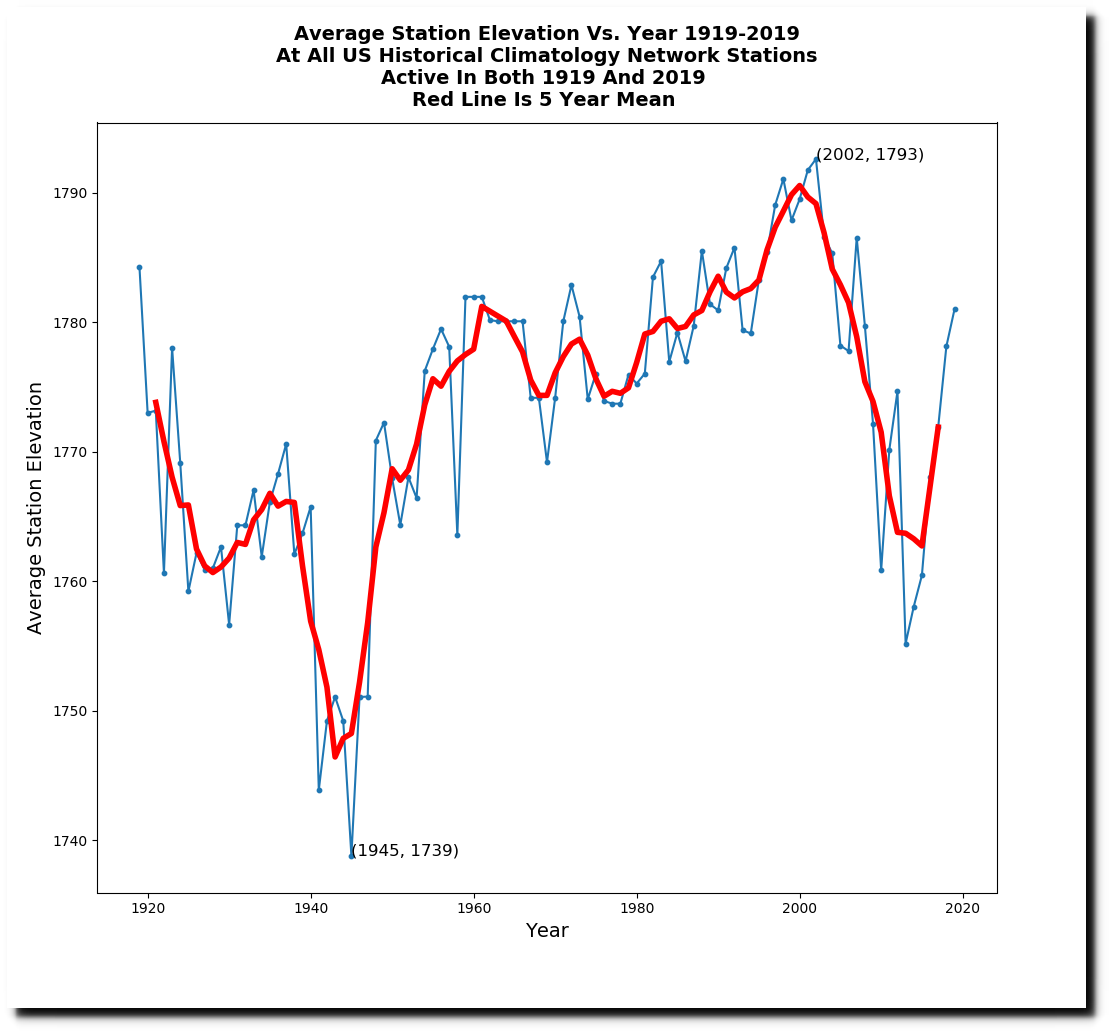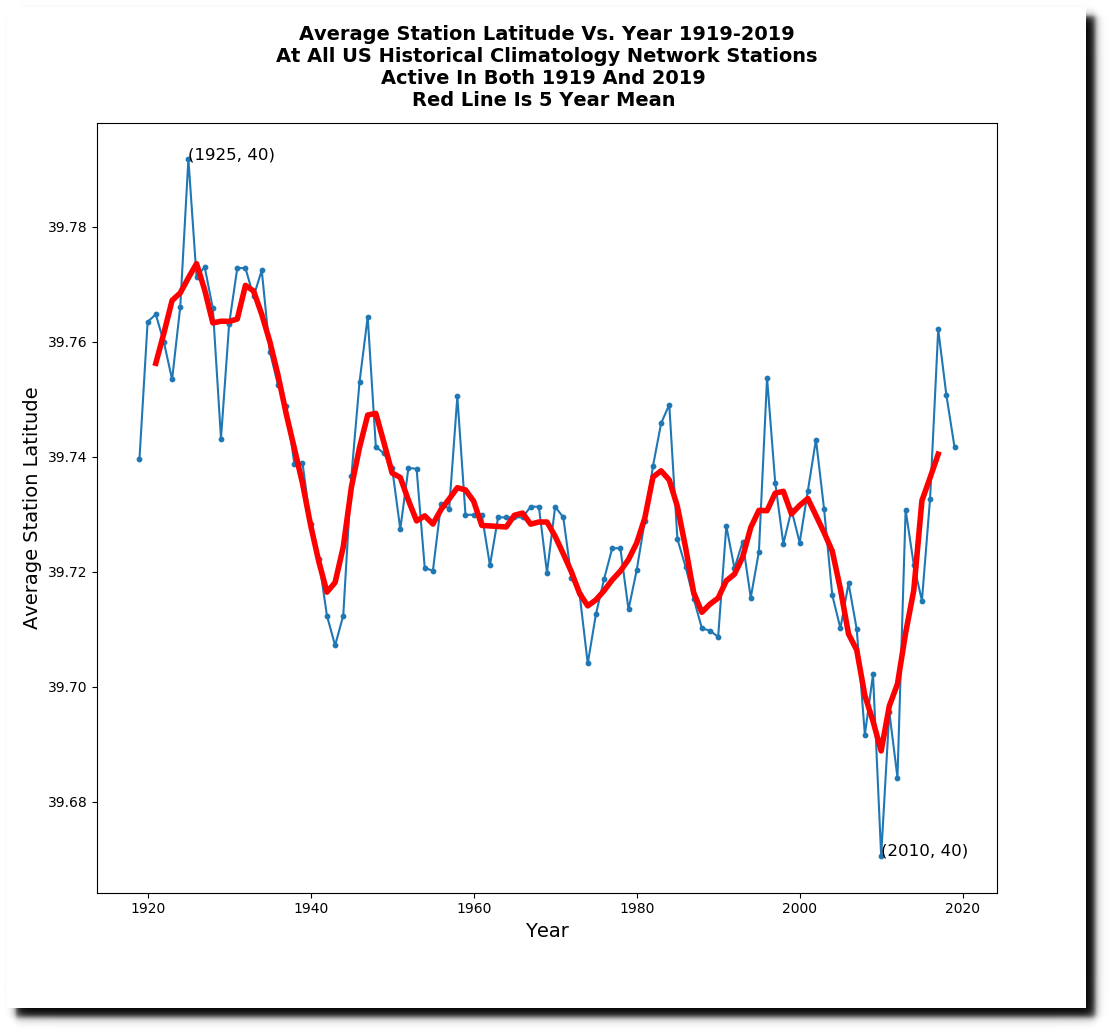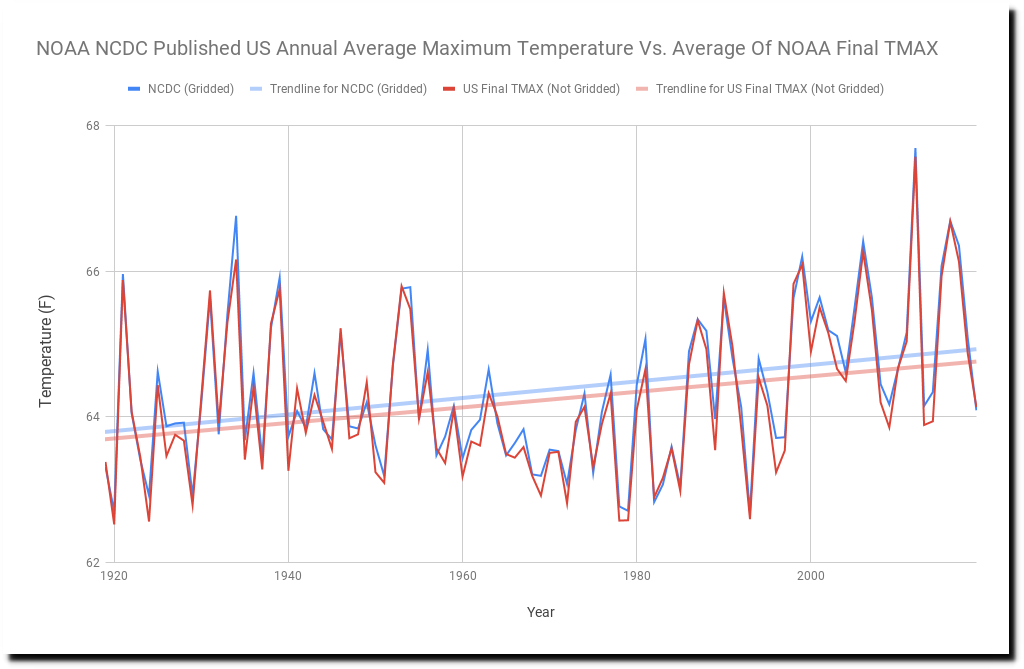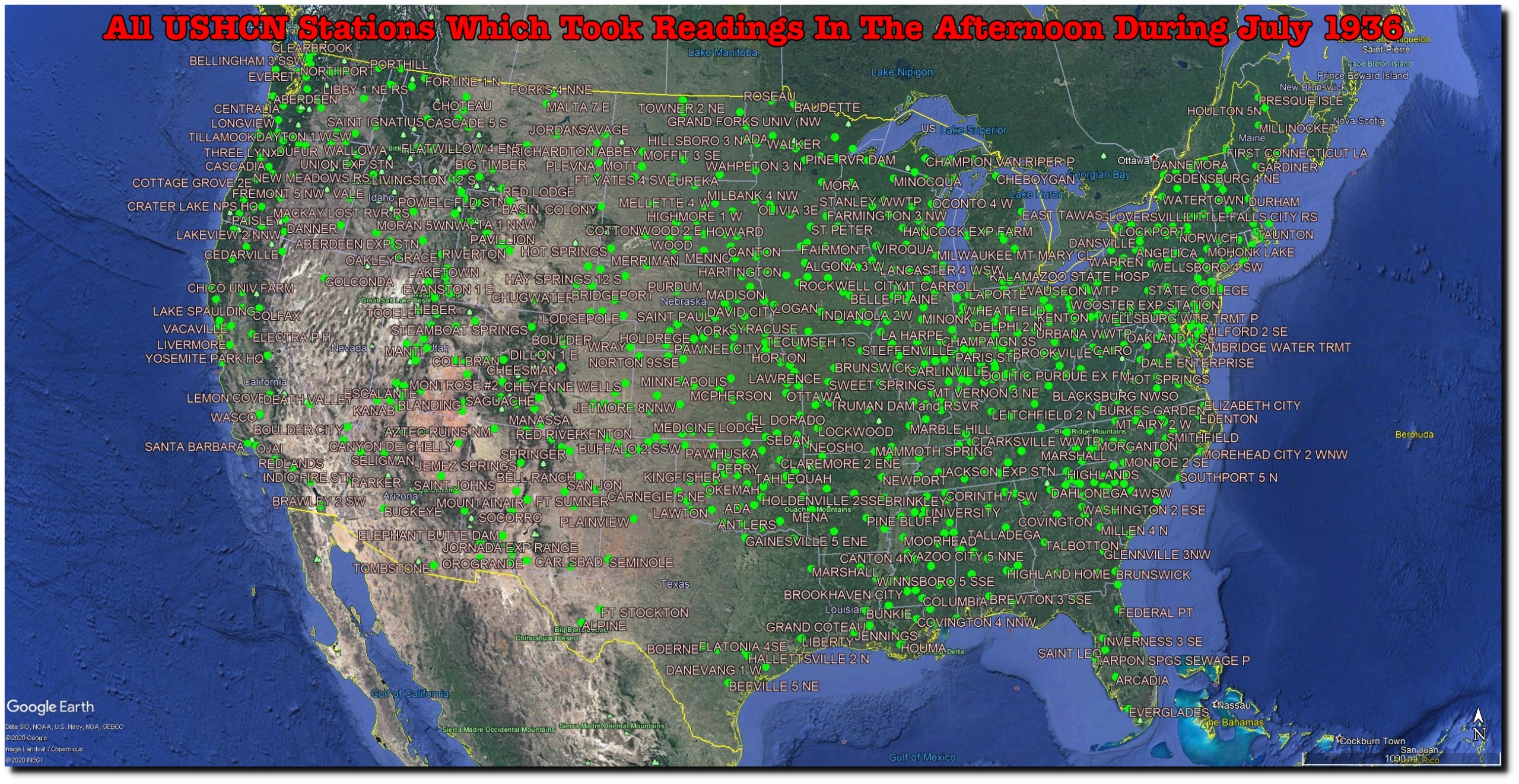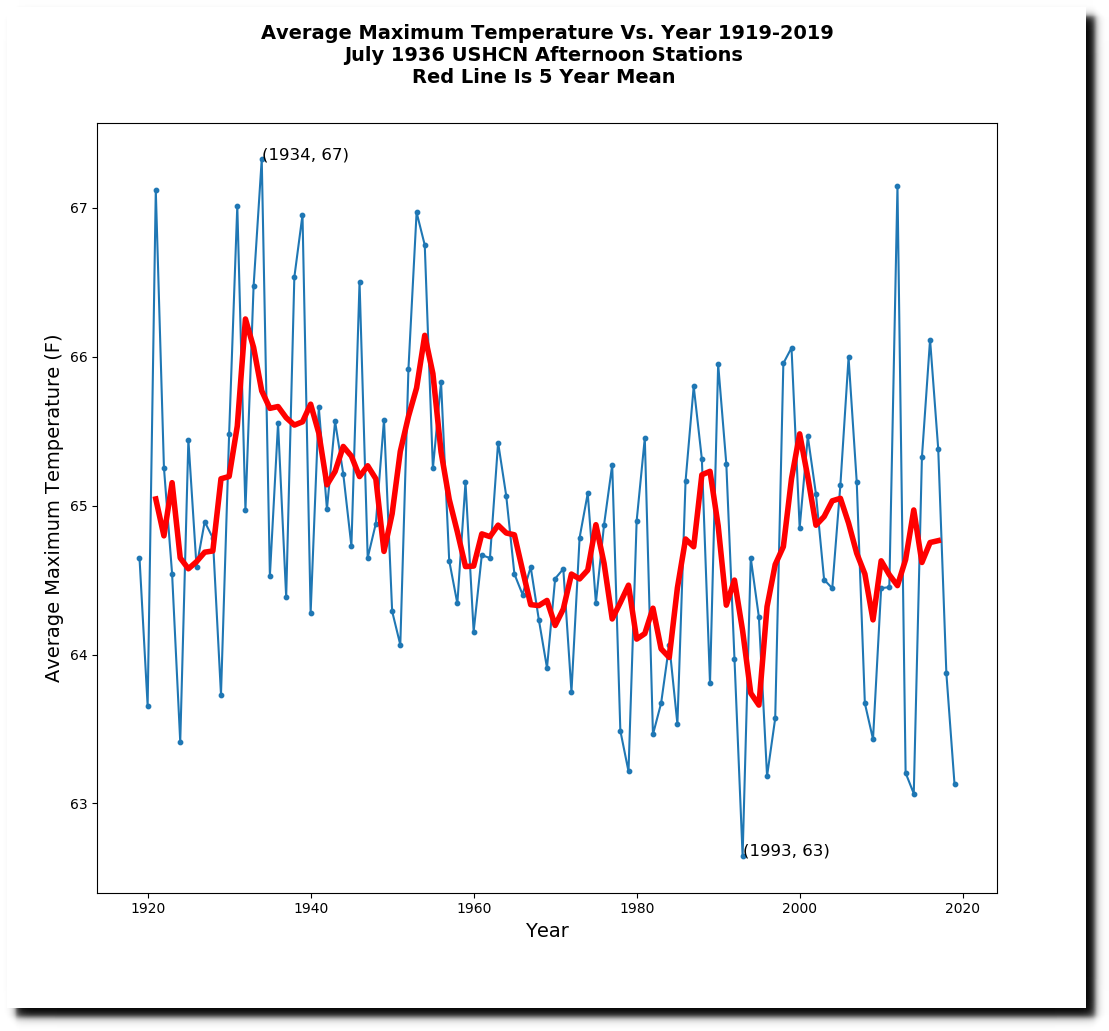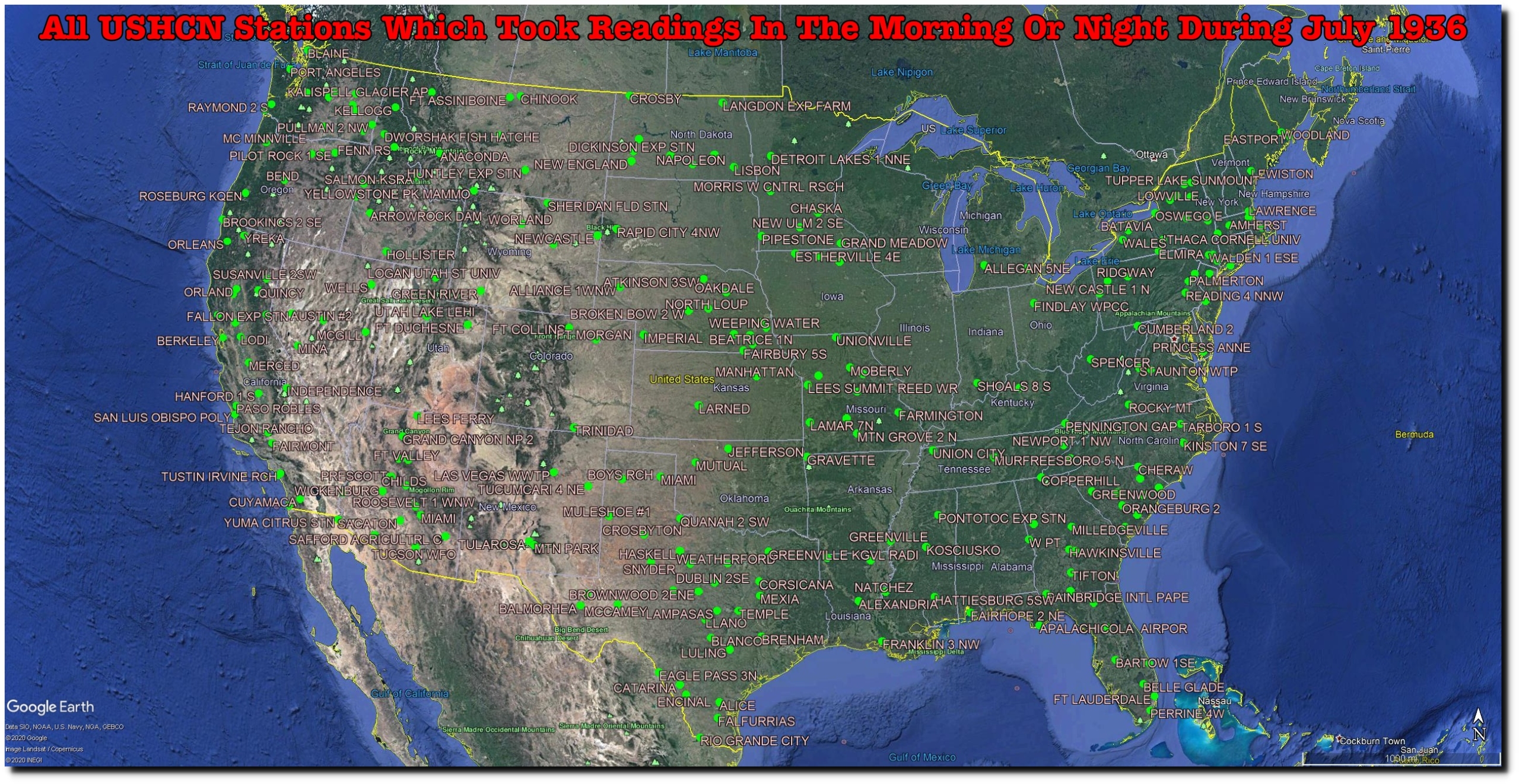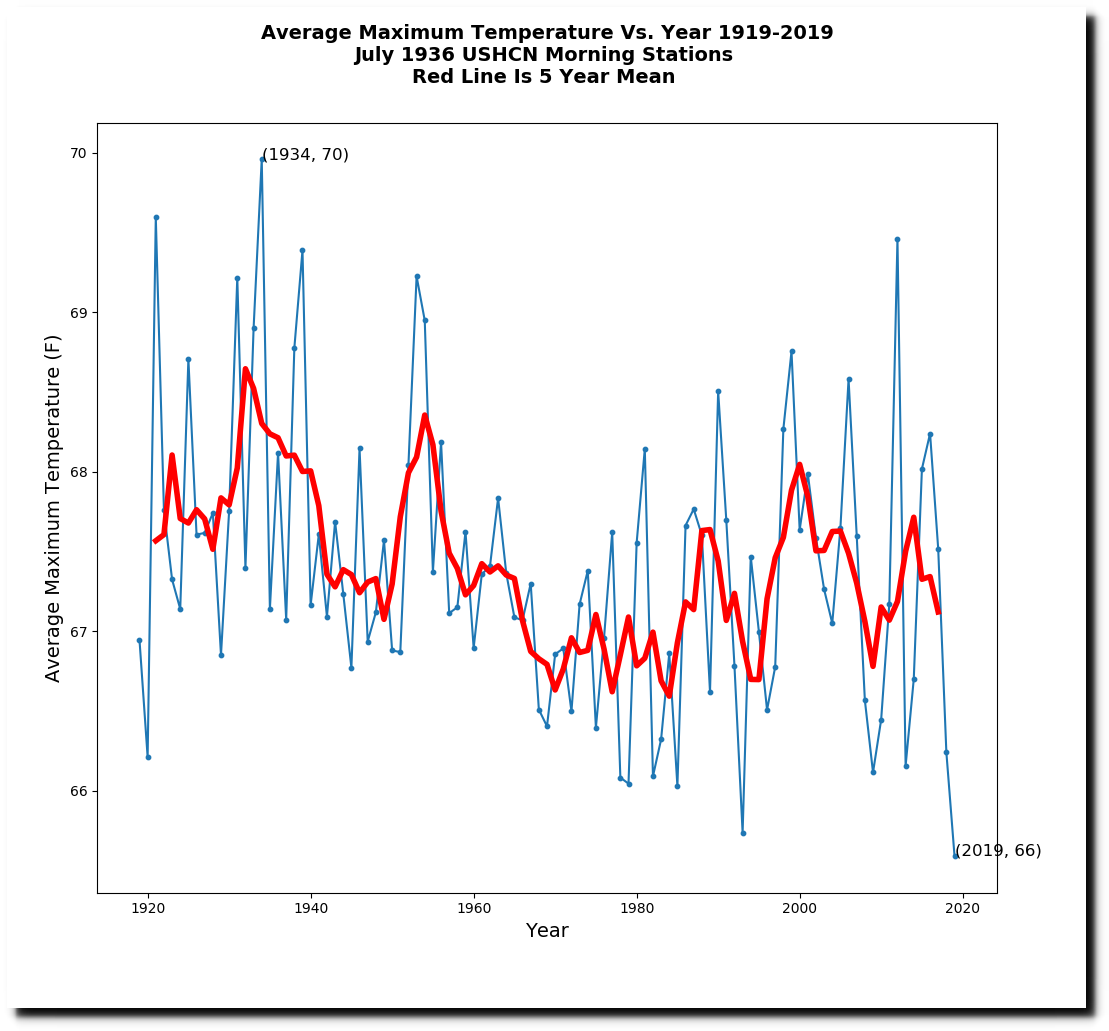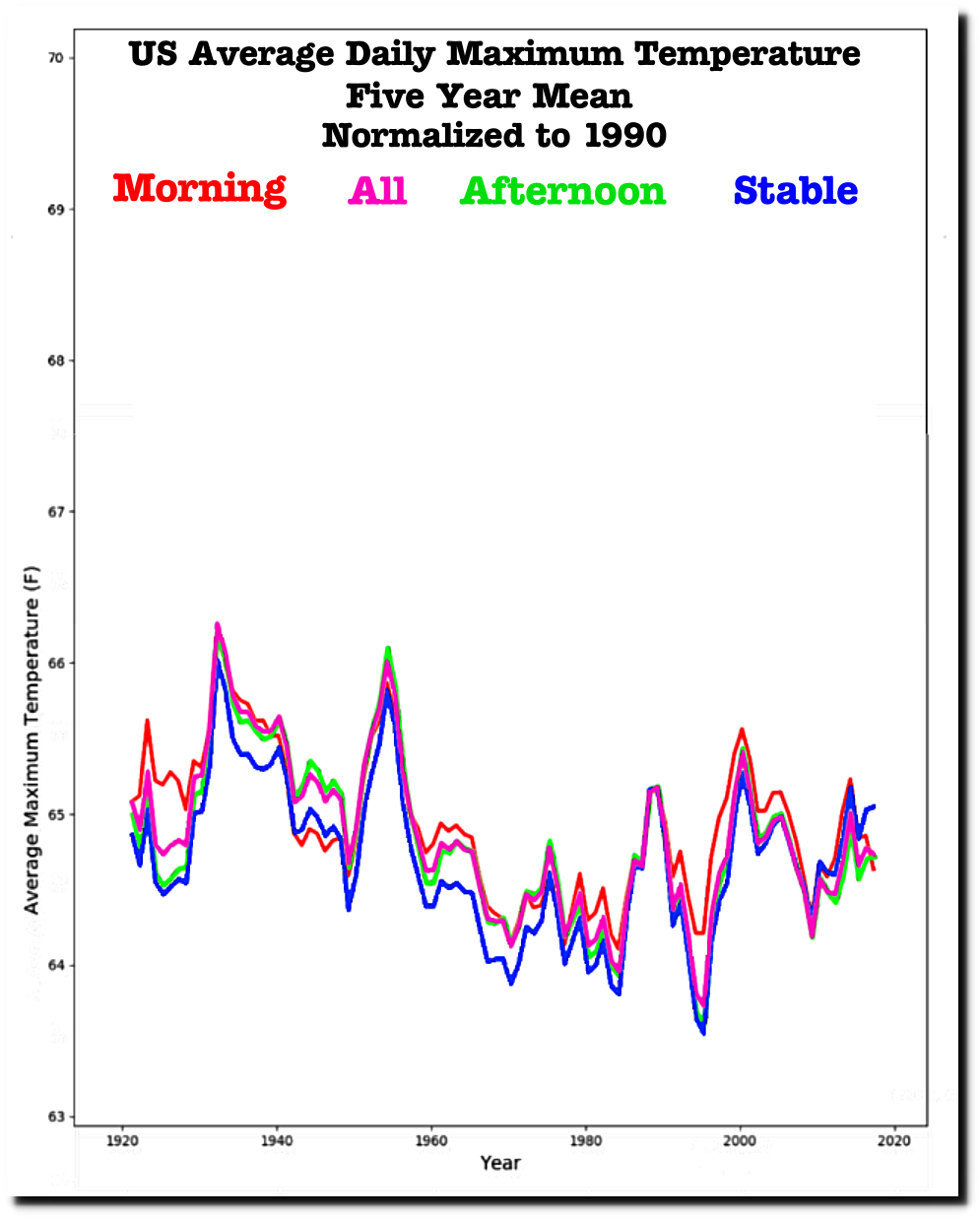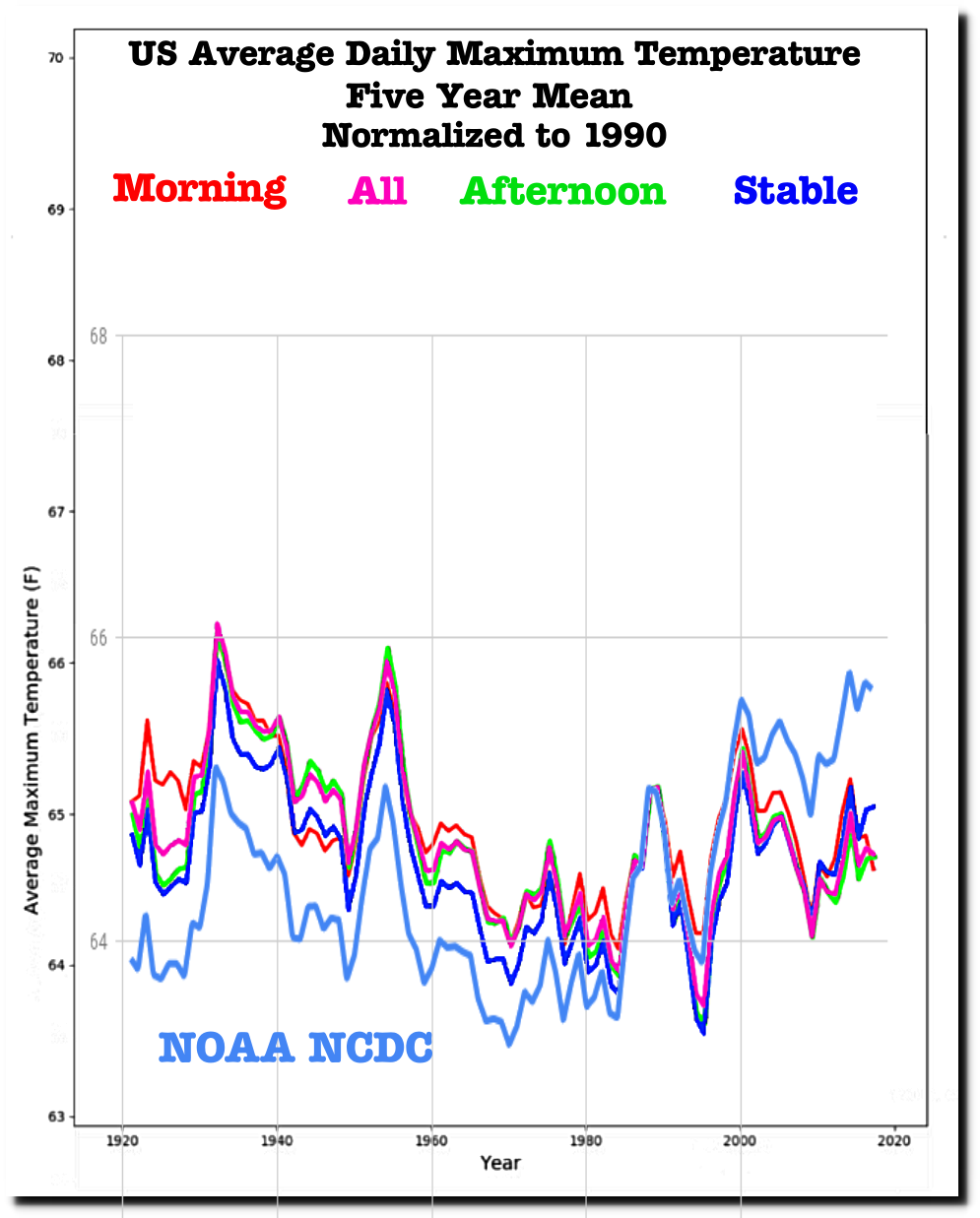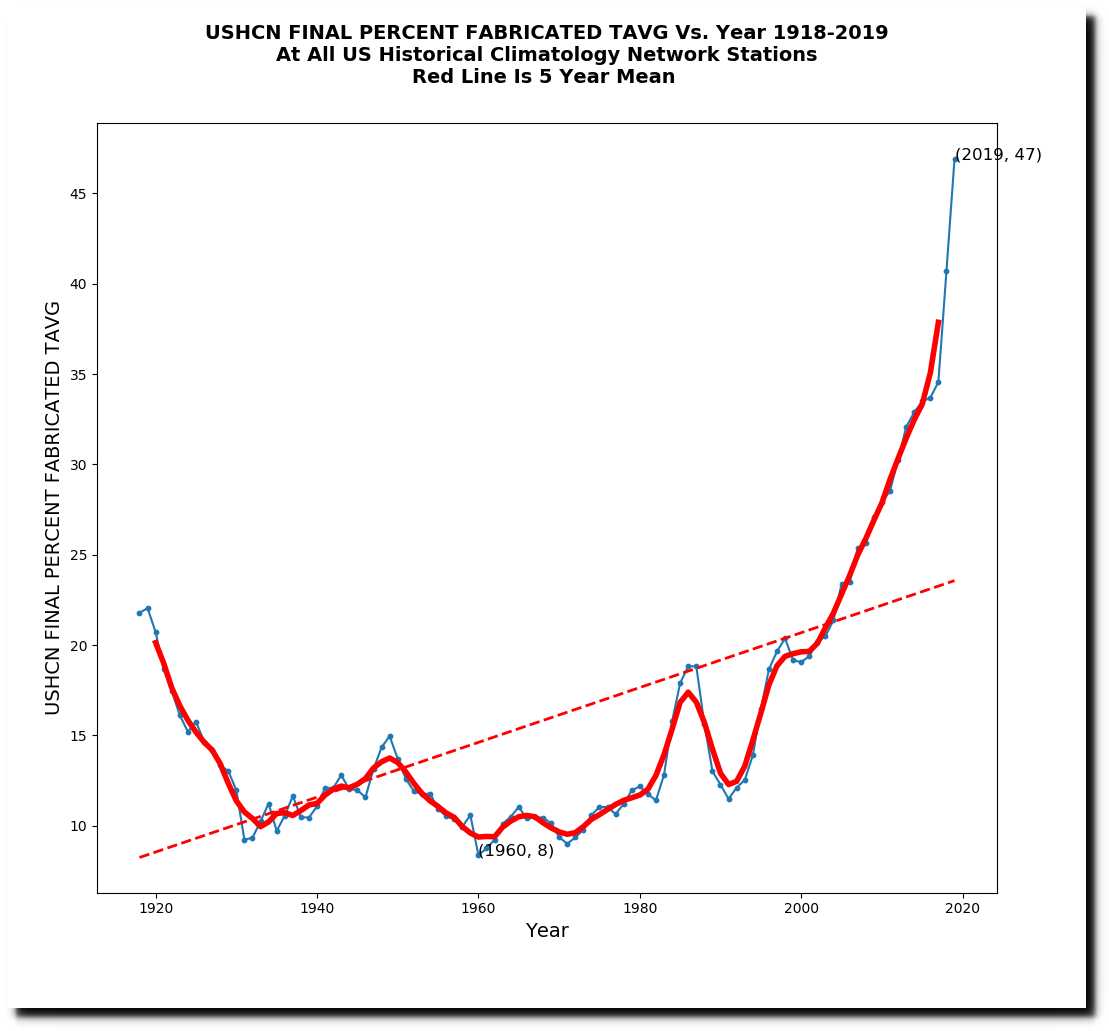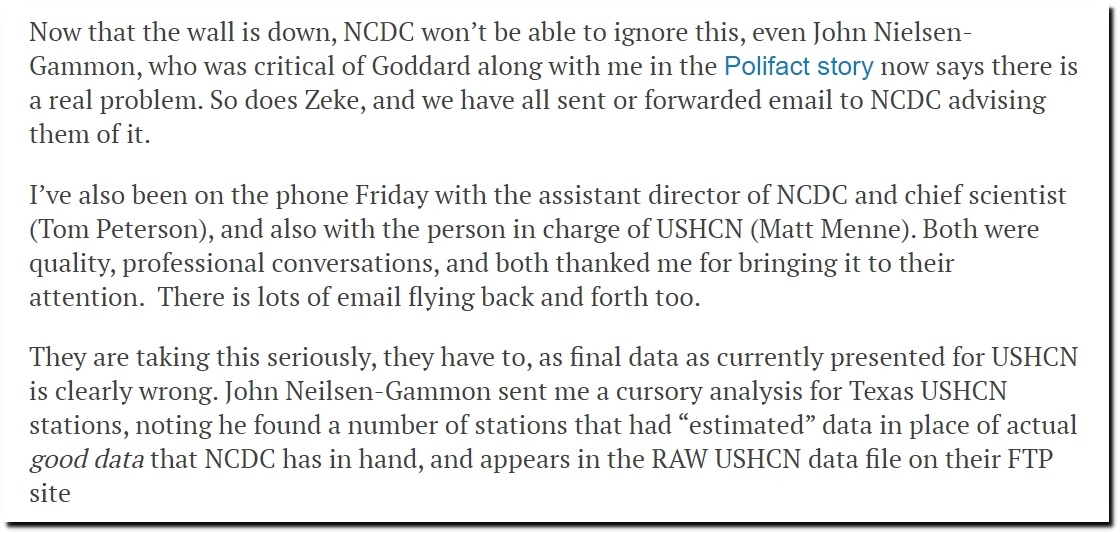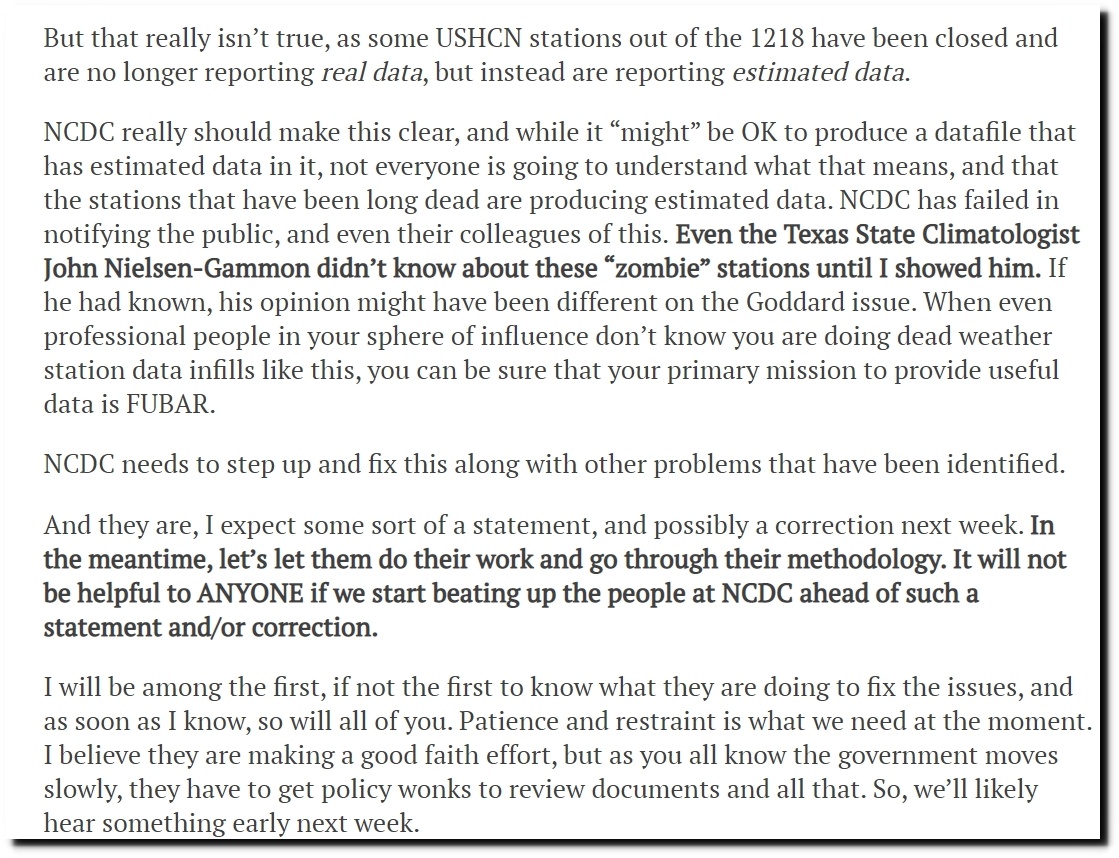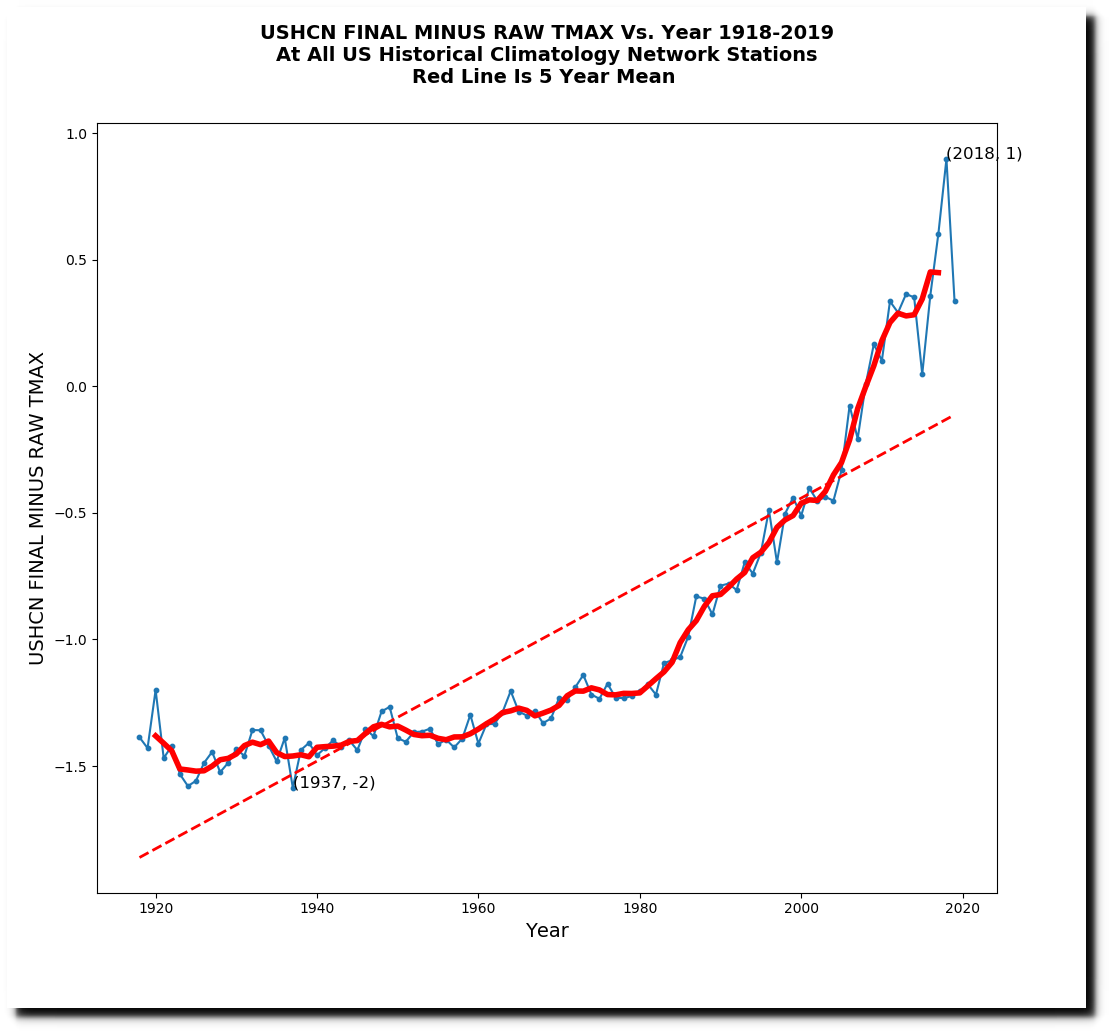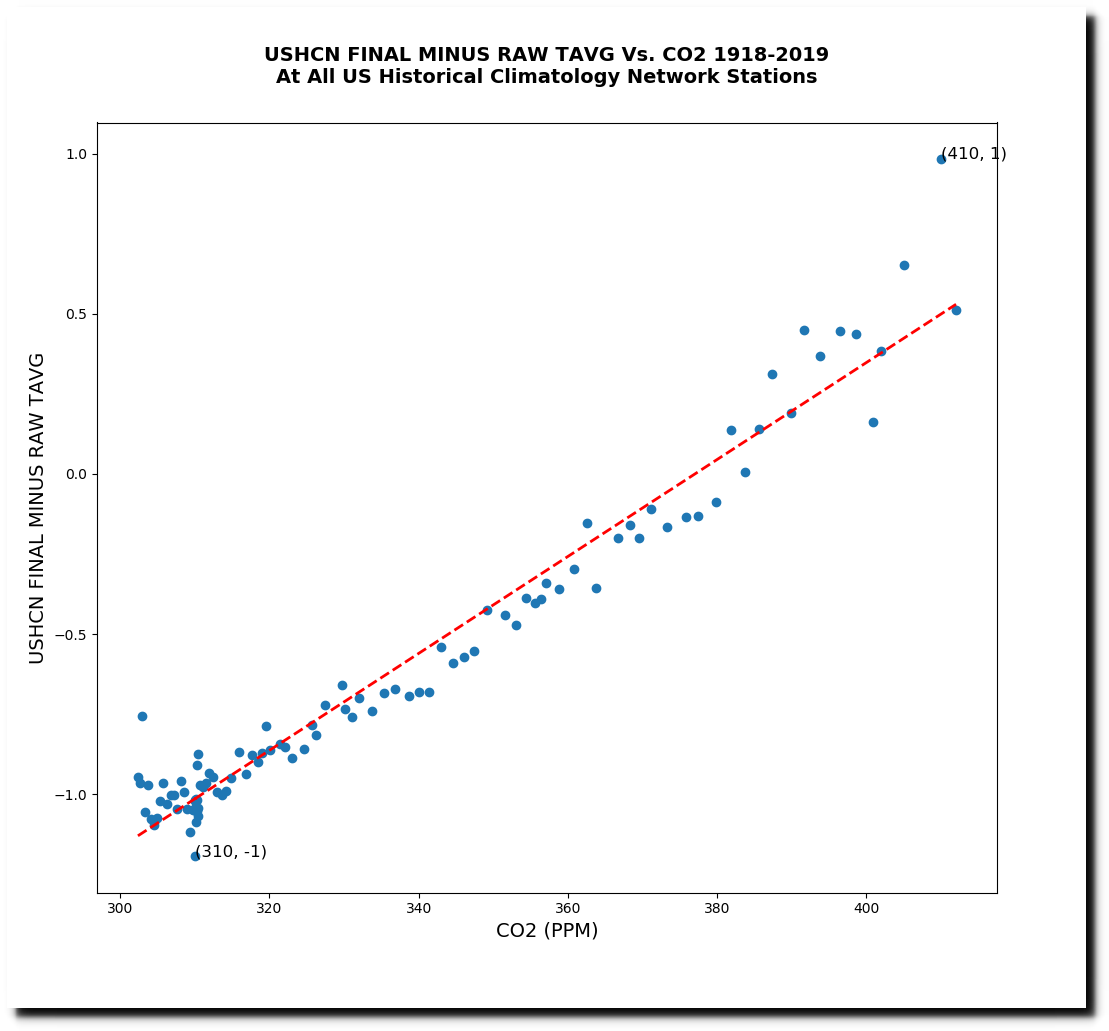NOAA shows US afternoon temperatures increasing over the past century.
Climate at a Glance | National Centers for Environmental Information (NCEI)
The raw data shows the exact opposite.
Zeke Hausfather explained why they tamper with the data, and said that I made “major errors” by not tampering with the data like he does.
The Blackboard » How not to calculate temperature
Zeke’s first excuse for data tampering was “changing station composition” – meaning that the USHCN station set has changed over time. It is simple enough to eliminate that problem by using only a stable set of stations. The map below shows all USHCN stations which were active in both 1919 and 2019.
The average elevation and latitude of this set of stations has hardly changed over the past century.
I calculated the trend averages and trend for this set of stations, and it is not very different from the set of all stations. Changing station composition has minimal impact. What does have a major impact is that NOAA fabricates data for hundreds of stations which no longer exist.
Second complaint from Zeke was that I don’t grid the data. The importance of gridding is simple enough to test out. The graph below compares NCDC gridded temperatures vs. my simple average of the USHCN Final (adjusted) temperatures. Once again, there is very little difference, indicating that gridding has minimal effect.
The third standard excuse is time of observation bias. NOAA believes that most stations used to take readings in the afternoon, which caused double counting of hot days, and thus the past needs to be adjusted downwards. Once again, this is simple enough to test out, by splitting up the data set into morning and afternoon stations from 1936, which was the hottest summer on record.) And once again, the trend is scarcely different between the two.
In the graph below, I combined four data sets. The set of all USHCN stations, the set of stable stations, 1936 morning stations and 1936 afternoon stations. The morning stations are warmer because the average latitude of morning stations is lower (people in warmer locations are more likely to read their thermometers in the morning.)
This graph normalizes all four data sets to 1990, and shows that none of the excuses for data tampering have much impact on the trend.
This is the same graph, with the NCDC temperatures thrown in. They look nothing like any of the other data sets.
The real story is that NOAA is simply making data up. Almost half of it is now fake.
Anthony Watts describes the fake station data as being “zombie stations.”
Reality is that the data is being tampered with precisely to match the increase in atmospheric CO2.

